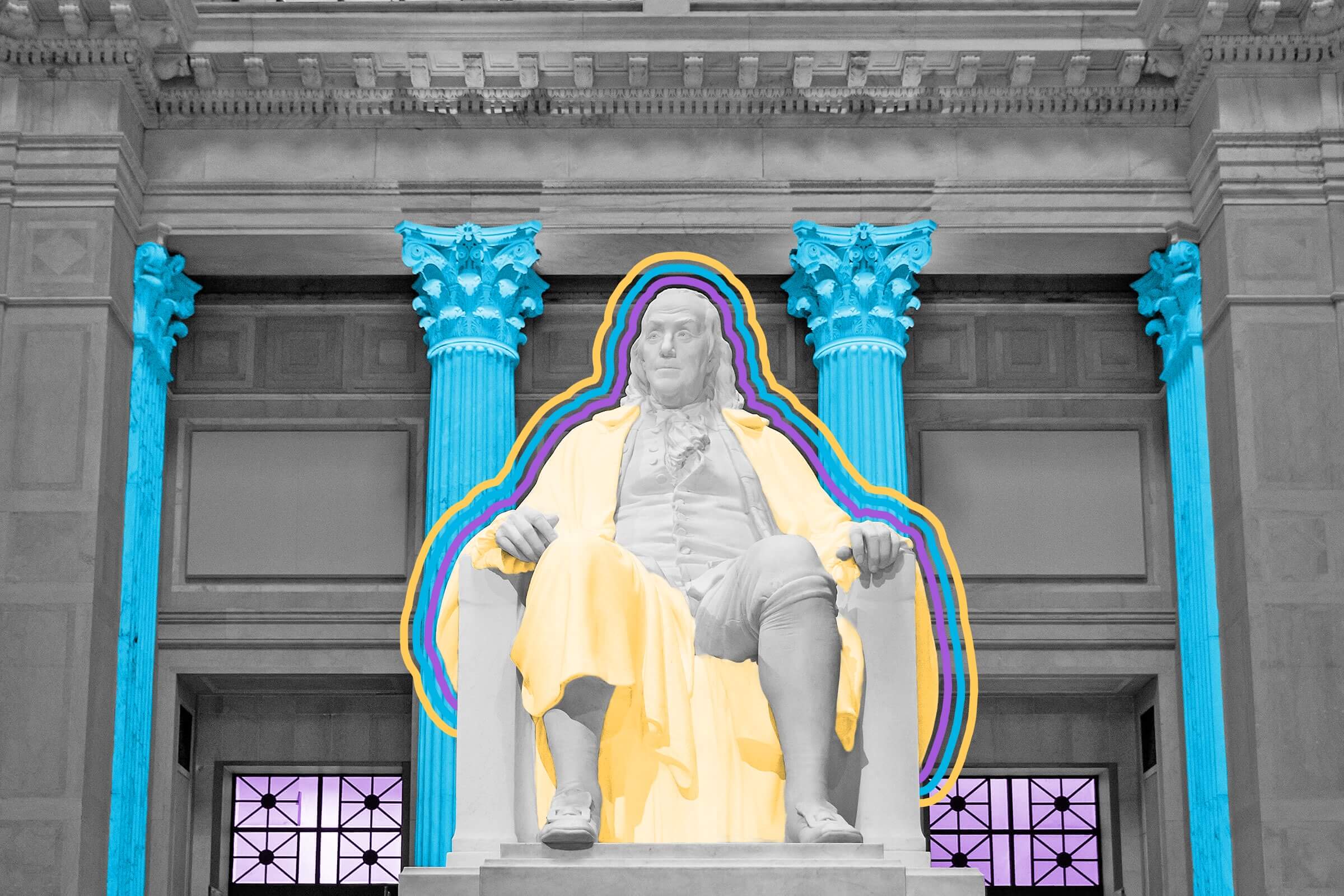
Benjamin Franklin invented the lightning rod.
In Benjamin Franklin’s time — and for centuries before — lightning was a fear-inspiring phenomenon, known for starting fires, destroying buildings, and injuring people and livestock. Because little was known about how lightning worked, some people undertook unusual preventative measures against it, like ringing church bells to avert lightning strikes (even though that sent bell ringers dangerously high into steeples during storms). Perhaps that was why Franklin, the prolific inventor and founding father, was so captivated by lightning and devoted much of his scientific studies to experimenting with electricity. In 1752, Franklin undertook his now-storied kite exercise during a storm, correctly surmising that lightning must be electricity and that the mysterious energy was attracted to metal (though some historians have questioned whether the experiment actually ever happened).
With this concept in mind, Franklin designed the Franklin Rod, crafted from a pointed, iron stake. Heralded as a new, lifesaving invention that could guide the electrical currents from lightning into the ground, lightning rods sprung atop roofs and church steeples throughout the American colonies and Britain, and some were even anchored to ship masts to prevent lightning strikes at sea. Initially, some clergy were unwelcoming of the protective devices, believing lightning rods interfered with the will of the heavens; Franklin brushed off the criticism and continued his exploration of electricity, even developing some of the language — like the word “battery” — we use to talk about the force today.
While Benjamin Franklin is often applauded for his science-based inventions, he also created some of the public services we rely upon today. Franklin’s earliest such contribution was a library, opening in Philadelphia in 1731 as the country’s first lending library (though readers had to pay a membership fee). Five years later, Franklin established the Union Fire Co., the country’s first volunteer fire department, in an effort to better combat Philadelphia’s blazes. By 1751, he had also founded the Pennsylvania Hospital, the country’s first medical facility open to the public. Franklin’s ingenuity led the Continental Congress to appoint him as the colonies’ first postmaster general, tasking him with creating the country’s official mail routes in 1775 — a service that would transform into the modern United States Postal Service.

